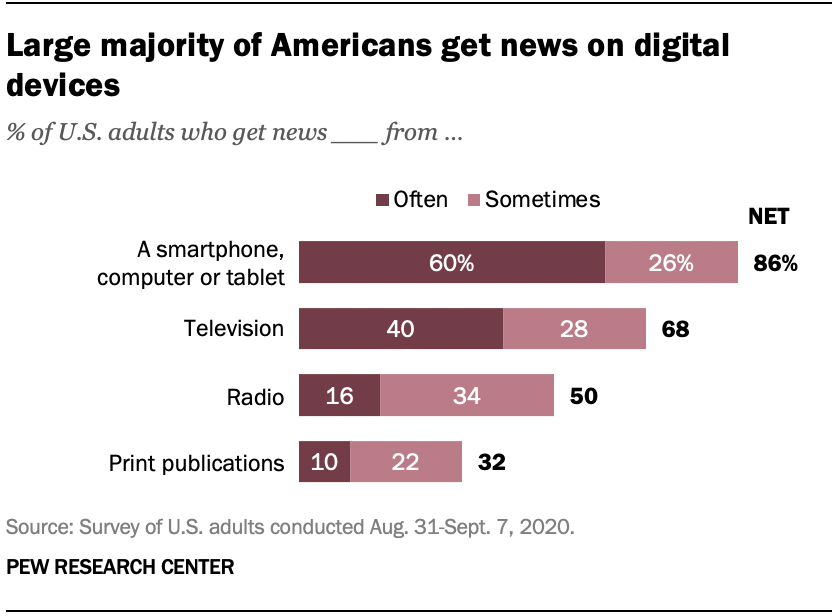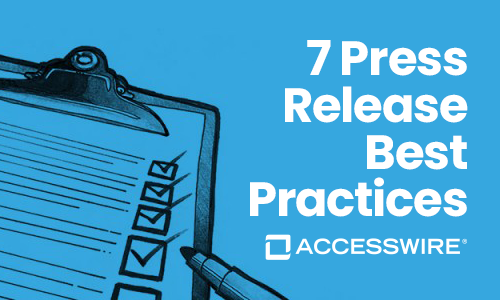A Guide to Press Release Translation
Press release translation was, once upon a time, an arduous task that could take businesses days or weeks to accomplish.
Not anymore. Thanks to countless innovative technologies, there is no limit to how broad an audience a business can have. Increasingly, press release translations are commonplace – but not all are created equally.
In this blog, we’ll answer the following questions:
- What is the purpose of press release translation?
- What are 5 press release translation best practices?
- What are the steps to building a successful press release translation?
What is the purpose of press release translation?
In the Information Age in which we now live, work and play, connecting with people from different cultures and nations can happen in a nanosecond. For businesses around the globe, the ability to instantly communicate with people who live on the other side of the planet was science fiction-level inconceivable to many of our parents and grandparents.
But here we are, living and working in a truly global community, where the ability to communicate with people in far-flung places we’ve only dreamed about is a reality. Communication, as it turns out, is one of the most valuable commodities we have at our disposal…except for that tricky bit about language barriers.
In 2020, independent marketing research firm CSA Research released the results of a survey of 8,709 global consumers in 29 countries in Europe, Asia, North America, and South America. Those surveyed were asked about their experience/use of language translations on multiple online platforms, including websites, social media platforms, and video.
The survey findings included a few eye-opening statistics about online shopping practices:
- 76% of online shoppers prefer to buy products with information in their native language.
- 40% will never buy from websites in other languages.
- 65% prefer content in their language, even if it’s poor quality.
While the CSA Research study focuses on B2C practices, it’s instructive to remember that people also consume news online.
In 2021, the Pew Research Center released the results from a study of where Americans obtained their news. According to the survey, a large majority of respondents – 86% - said they rely on digital devices (smartphones, tablets, and/or computer) for their news either “often” (60%) or “sometimes (26%).

Businesses around the world, regardless of size and location, have figured out how to use all forms of web-based platforms to help them communicate with their various target audiences. Websites, videos, social media, e-mail campaigns, and podcasts are valuable tools with which to achieve greater brand awareness – and language translations for the aforementioned platforms abound.
Considering the fact that press release distributions are arguably the most important efficient and effective way for companies to tell their stories, one might assume that using translators or translation software is as commonplace as it is on other platforms.
That would be a wrong assumption. While the trend for translating press releases is definitely on the rise, it’s not an overwhelming high priority for businesses.
And for them, that’s a shame…because there’s a worldwide audience out there to which companies could communicate.
If your company’s leadership is considering translating your press releases into other languages, we will provide some insight and tips on how best to get that ball rolling.
5 press release translation best practices
When translating a press release, it's important to accurately convey the information and tone of the original text while also making the translation sound natural to a native speaker of the target language.
In a previous ACCESSWIRE article, we covered the 7 Press Release Best Practices; the following list can be used as a companion to that blog.
- Since it is so important to make your press release read and sound like it was created by a native speaker of the other language, use either a professional translation agency, or someone who not only speaks the other language, but also has experience in press release translation.
- Double-check the translation for accuracy and make sure it accurately conveys the information and tone of the original text.
- Make sure the translation is culturally appropriate for the target audience and doesn't contain any references or jokes that may not translate well.
- Use a translation style guide to ensure consistency and maintain the brand's tone and voice in the translation.
- Consider having the translation reviewed by a third-party expert, like a native speaker of the target language, to ensure your press release reads and sounds natural and is free of errors.
The ultimate goal of press release translation is to communicate the information and message of the original text effectively and accurately to your target audience. Following these best practices can help to creating a successful translated press release.
Steps to building a successful press release translation
Now that you understand the importance and value of translating your news, let’s look at some of the steps you can take prior to the translation that will help get your message in front of your desired audience.
1. Determine your target audience.
This is where your public relations and marketing goals come into play.
Let’s say your company is based in the U.S., and now you are expanding your retail brick-and-mortar stores to Japan. Obviously, you will want to make your announcement resonate with Japanese-speaking people throughout that country, so that your company can attract the interest of shoppers.
As with all such press releases, you’ll need to attract the demographic that you expect will shop at your company’s Japan stores. Are the shoppers young or old? Male or female? Are they athletic, or musically inclined? Are they kids and parents? What are your ideal shoppers’ median income?
Perhaps you’re hoping to attract a different language within the U.S. – say, appealing to a wider Latino or Hispanic audience. Are you aware of the subtleties of each language? Words and phrases used by Spanish-speaking Latinos sometimes have different cultural meanings than the same words spoken by someone from Hispanic descent.
The same could be said about translations into Chinese…what is said by a Cantonese speaker can be different from someone speaking Mandarin.
Making sure you are using the appropriate verbiage underneath a larger language umbrella can save you from an embarrassing situation.
2. Whenever possible, allow industry experts to assist in the press release translation.
If you can include information or quotes from a credible source who speaks your translation language – particularly someone local to your target audience (domestic and international). If you are using a 3rd party translator or translation service, they may need some clarification as well, so putting the translator in touch with an industry expert who speaks that language can be quite helpful.
3. Localize your press release translation.
There are often cultural and/or linguistic changes your press release may need – especially if you are targeting international journalists or media outlets. Your translator should be able to make sure appropriate standards and rules are applied to your copy.
Does the country where you are sending your press release use commas in monetary references, rather than periods? Do the letters need specific symbols, such as the umlaut over a vowel, like an ë, ä, or ö? What about other accent marks like é, ê, ñ, or ç? These examples are important in both speech and writing and can change the meaning of a word when not used properly.
Additionally, your translator should always:
- Be mindful of a unique cultural angle like holidays or customs
- Be knowledgeable of legal requirements and local rules/regulations
- Use proper standard of measurements like Fahrenheit vs. Celsius or meters vs. miles, etc.
- Include graphics that reflect the location
- Translate photo captions and Alt Text
4. Be sure to time the publication of your translated press release strategically.
If you are sending your translated news release internationally, make sure you are using the local time of the city or country, rather than your company’s location. Doing this will increase the number of journalists who will see your release.
What good comes from your translated press release hitting the wires in the middle of the night? Optimize the time of the release, too; most press release distribution takes place at the top of the hour and half-hour. When possible, choose a time when fewer releases are being published, like 10:12 a.m. or 1:43 p.m. local time.
Another consideration is to be mindful of domestic and international holidays. There are several holidays throughout the world where holidays take place on multiple days at a time, and when this happens, many media outlets use “evergreen” stories (i.e., news that can be prepared in advance) that can be scheduled to be used ahead of time, in order to let as many employees off as possible.
Summary
Opening up your business to a new audience is not an easy task – there are many risks that can threaten to upend your company’s news when delivered in another language. That said, the reward can be tremendous when you understand and employ the ins and outs listed in this article. Making sure your translator is an expert – and preferably a native speaker of the language in which your translated press release will be delivered – is highly recommended. Additionally, using a person or service that has experience in press release translation is critical.
Of course, having a press release distribution provider that has access to all foreign language journalists and media outlets around the globe is arguably the most important part of sharing your translated news. ACCESSWIRE’s expert staff can guide you through the process and get your news exactly where you need it to go.
We encourage you to schedule a demo of the ACCESSWIRE press release distribution platform, to find out how easy and user-friendly it is to share your business’s news. Click here to set up your appointment today!
Similar Blog Posts
PRODUCTS
ACCESSWIRE | All Rights Reserved




